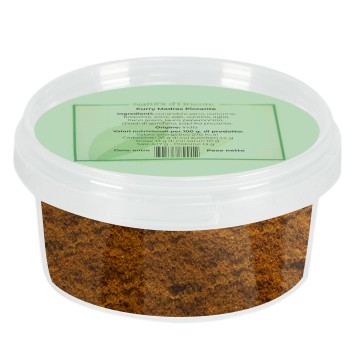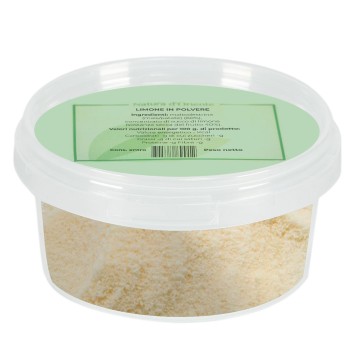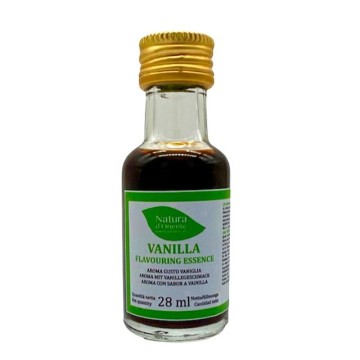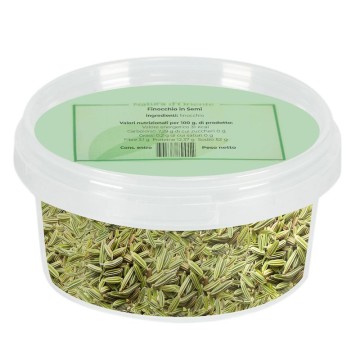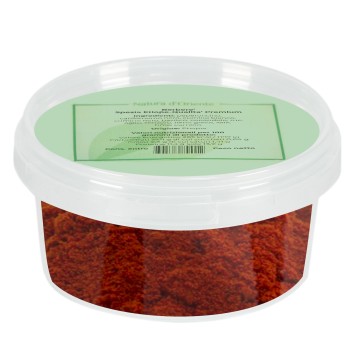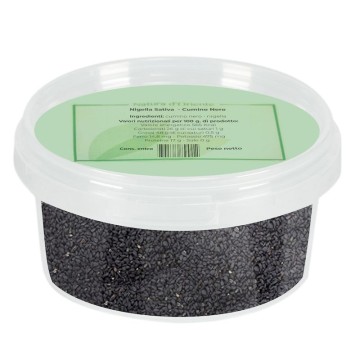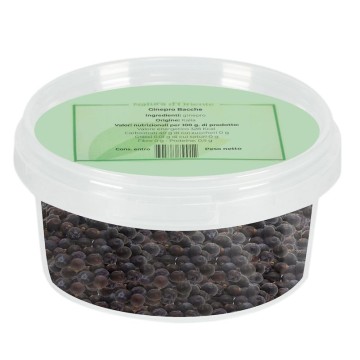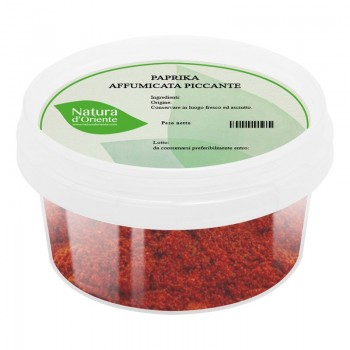This spice comes from nutmeg, but with differences in aroma and taste. It is obtained from the outermost part of the seed, the fleshy covering called aril that surrounds it. Dried and reduced to mace powder, it becomes a prized oriental spice, known for centuries in Europe even if not always known. Also called mace or nutmeg flower, mace in the kitchen allows you to create increasingly refined aromatic suggestions in many dishes. It spreads its characteristic scent on various dishes, both sweet and savory. Being linked to nutmeg, it evokes its taste but is less intense and more complex, with floral and sweet notes, and a warmer and more subtle smell. It is not evanescent, however, since it gives a clear profile that evokes black pepper, citrus and pine in the scents. In addition, it gives dishes and drinks a touch of color, with its lively tone: mace, after drying, becomes yellow-orange and resembles saffron.
Mace: properties and benefits
Like other spices, mace also has excellent digestive properties; it is known to regulate gastrointestinal motility and counteract flatulence, facilitating the expulsion of intestinal gas. It aids digestion with a carminative and anti-swelling action, obtained above all by infusing mace in boiling water. It is historically used to combat diarrhea, and in Ayurvedic medicine it is known to combat poor digestion and nausea.
Furthermore, mace was historically used to help the well-being of the mucous membranes and to relieve coughs, always through infusions and in particular in the form of essential oil.
Its beneficial properties include the ability to support the body in cases of exhaustion and psychophysical fatigue, thanks to its nutrients. Mace has antioxidant properties and contains active ingredients including phenols, as well as various aromatic compounds (myristicin, safrole, pinene and sabinene). It also provides rich compounds such as fiber, proteins and many mineral salts (iron, magnesium, potassium, phosphorus, copper, zinc and manganese). Mace also provides some B vitamins, beta-carotene, vitamins C and E.
It performs rebalancing functions in aromatherapy, proving to be a resource for good mood, and its essential oil is very well known in perfumery. Mace essential oil is used to create liqueurs such as nocino. Mace is generally considered safe as a spice, but it is necessary to respect the recommended doses. In case of excessive intake, unwanted effects such as nausea, stomach pain and diarrhea, increased sweating, palpitations and agitation arise.
How to use ground mace in cooking
Originating in Indonesia, this “nutmeg flower” is famous as a spice in oriental cuisine, both Indian and Chinese. Dried and then powdered mace releases its aroma homogeneously in recipes, releasing it immediately even in short cooking times. The ground version allows you to reach every part of the food being prepared, uniforming the flavor and avoiding the less edible presence of whole mace. However, flavors and aromas are more concentrated in the powder and this should be considered in recipes (a level teaspoon of whole mace is approximately 1/2 teaspoon of powder).
Its flavor is less intense than nutmeg, but it still has notes of black pepper and a sweet tone that is very popular in pastries or on some meats. Its chopped consistency allows you to add ground mace in very small quantities to desserts and savory dishes, barbecue sauces, ice cream, etc. In addition, powdered mace is often used in place of nutmeg, which with its dark color could change the appearance of some dishes; it becomes an excellent substitute in sauces and clear broths, in omelettes and egg-based dishes, in mashed potatoes.
Sweet recipes: the warm notes of mace, which sometimes evoke black pepper, create a bridge between savory and sweet in recipes such as donuts, pumpkin or apple pies. The ground version can be sprinkled in place of nutmeg on cakes, biscuits and baked goods. Perfect in cake and shortcrust pastry dough or in fillings, it is very popular on berry tarts, carrot or rhubarb tarts. Excellent spice on vanilla ice cream to add complexity of flavour, it is dusted on mango, fresh or dried fruit, puddings and fruit salads. It can even be sprinkled on cappuccino.
Savoury recipes: it flavours rice and risottos, pasta dishes, soups and broths. The powdered version of mace can be used in chicken stock, it goes well with timbales, pates, sweet potato, pumpkin and carrot dishes. Excellent on cheeses and to flavour homemade preserves and pickles.
Meat: mace adds depth to braised and stewed meat, often used as aseasoning for lamb, veal, pork dishes, in chicken skewers. It is used in the preparation of Swedish meatballs, mace is very popular in Northern Europe where it is also used in English pork pie. In Italy it is found in the recipe for rabbit in salmì (red wine flavored with mace and other spices). It can be added to second courses based on white fish, evaluating its taste and aroma in stews and other seafood recipes.
Indian cuisine: mace is used in many curry and chutney recipes, or one-dish meals such as korma – based on meats marinated and cooked in spices. In the form of powdered mace, it is added together with other spices to a paste of garlic, ginger and turmeric. Infusion: to facilitate proper digestion, prepare a herbal tea using a teaspoon of powdered mace, in the filter. Leave in boiling water for about 10 minutes and then drink.
Drinks: It is used to produce nocino liqueur and is also used in spicy and exotic cocktails and in mulled wine. Powdered mace flavours syrups for ice cream and fruit salads.
Mixes: In Indian cuisine, it is usually added to warming spice mixes such as garam masala, curry mix and tandoori masala. Mace can be used to marinate meats to be grilled on the barbecue. It pairs well with cloves, pepper and allspice; due to its subtle flavour, it should be used wisely when combined with cumin, ginger, saffron, vanilla, cinnamon, coriander and fennel.
Sauces: Mace can flavour sauces and cream, sauces such as mustard and béchamel. Thanks to its delicate flavour, it is also excellent in honey and jams, to be combined with cheeses. It is also used to color fresh pasta dough, and to give a different touch to brown sugar.
Chicken with the scents of the world
Ingredients: 750 grams of chicken breast cut into bite-sized pieces - 2 small chopped shallots - 2 jars of plain Greek yogurt - 1 ladle of vegetable broth - 1 teaspoon of tandoori masala powder (mix of chopped spices) - 1 tablespoon of turmeric - 1 pinch of mace powder - 1 teaspoon of sweet paprika - 00 flour to taste - 1 tablespoon of extra virgin olive oil - 1 bay leaf - fine salt to taste
Preparation
Put the chicken pieces in a bowl and sprinkle all the spices: turmeric, mace, paprika, tandoori masala. Mix well and leave to marinate for about 30 minutes in a cool place. Gently fry the chopped shallot in a pan with the oil and bay leaf. In the meantime, flour the morsels, and then transfer them to the pan. Brown until golden, and then add the ladle of vegetable broth. Leave to cook for another 10 minutes, and at the end of cooking add the yogurt to the chicken. Turn off the heat and stir for a few minutes. Season with salt and serve hot.
Origins and History of Cultivation
Macis (also called mace or nutmeg flower) is a spice native to the Moluccas, located in Indonesia and surrounded by the Pacific Ocean. As a spice, its history is documented as early as the 6th century, when in China it was used in cooking but above all as a medicine for its digestive properties. The traditional method for obtaining it was by collecting the nutmeg seed, from which the outer layer was separated, the fleshy covering that surrounds it (botanically called aril). Once separated from the seed, the outer mace was dried in the sun for 1 or 2 days. In this way, two very distinct spices were obtained. The mace could be used as a spice after a couple of days, but much more often it was continued to dry for 3-4 months, closed in wooden boxes. In this way the beneficial active ingredients were concentrated and its aroma was amplified.
During drying it takes on a filamentous appearance and can be sold either as whole dehydrated pieces (also called nutmeg flower) or as powdered mace, after grinding. In Europe, mace arrived through the trade of Arab merchants and was considered a spice with mysterious origins, over time mistakenly called "nutmeg flower" given its affinity with this seed. It was a great success in aristocratic kitchens, who could buy mace at its exorbitant prices and use it, whole or ground. It became the favorite spice in the Renaissance kitchens of Charles V, much appreciated for flavoring timbales, pâtés, cakes and focaccias. It was often combined with pepper, and over time it became increasingly sought after. This spice was spread more widely in the seventeenth century by the Dutch and later exported elsewhere by the English – today the plant is also grown in the West Indies.
By the eighteenth century, mace had become ten times more expensive than nutmeg, and an anecdote tells of a nobleman who, in order to obtain the fabulous “trees of the maceacis” promised by a swindling merchant, had all the nutmeg plants in his lands cut down, giving him an exorbitant sum. In the East, this spice is still used today for its beneficial properties, in particular through the infusion of chopped mace, soaked in water. It becomes a natural remedy against nausea, to aid digestion and resolve irritation of the mucous membranes during colds. Plant and flowers
Myristica fragrans of the Myristicaceae family is the evergreen tropical tree from which mace comes. It can reach a height of 20 meters, and gives us two different spices: the classic nutmeg from the seed, and mace from the protective covering of the seed itself. These are the fleshy arils that surround the brown seeds, and emerge when the fruit is fully ripe and splits in two.





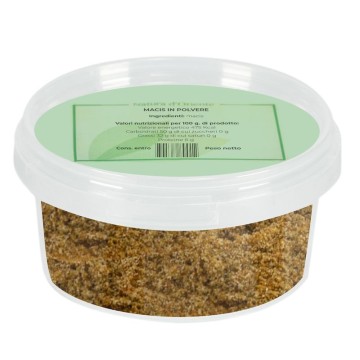



 No reward points for this product.
No reward points for this product.
